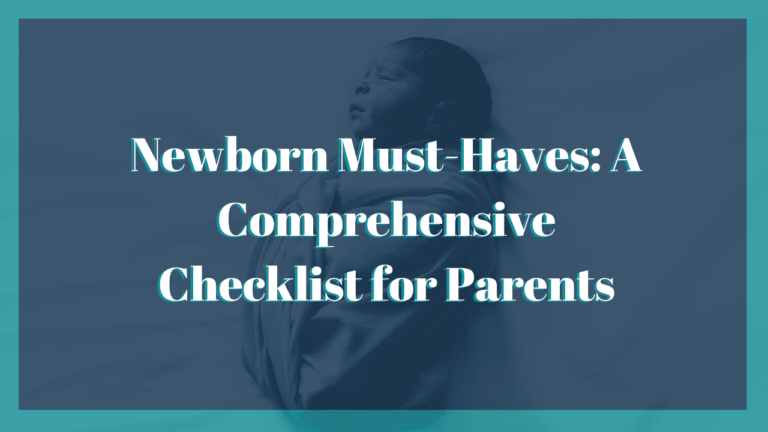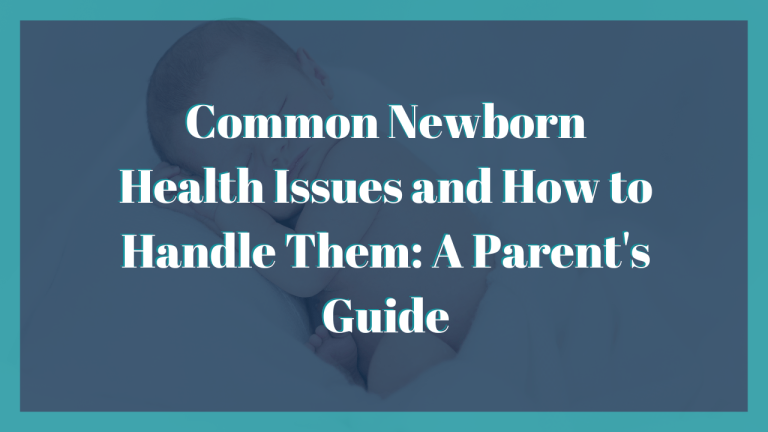How to Soothe Colic: Expert Tips for Relieving Baby’s Discomfort
Caring for a newborn who cries for hours on end can be overwhelming and exhausting for any parent. You’ve tried feeding, changing, and rocking your little one, but nothing seems to work. If this sounds familiar, you’re not alone. Excessive crying in infants, especially in the first few months, is surprisingly common and often leaves parents searching for how to soothe colic effectively. The good news is that there are proven techniques that can help soothe your baby and bring a sense of calm back to your household. In this guide, we’ll explore why some babies experience prolonged crying spells and offer practical tips to help ease their discomfort. Let’s dive into strategies that can give both you and your baby some much-needed relief!
Understanding Colic: What You Need to Know

Colic is a common condition that affects infants, causing extended periods of intense crying, often for no apparent reason. While it can be distressing for both the baby and parents, it’s important to understand what colic is, what causes it, and how to recognize its signs. Knowledge is key to navigating this challenging phase with confidence and calm.
What Is Colic?
Colic is defined as frequent, prolonged, and intense crying in an otherwise healthy baby. It typically starts when an infant is a few weeks old and often peaks around 6 weeks of age, though it can last until the baby is around 3 to 4 months old. The hallmark of colic is that the crying happens for more than three hours a day, more than three days a week, for at least three weeks. This prolonged crying often follows a pattern, occurring at the same time each day, usually in the late afternoon or evening.
Possible Causes of Colic
While the exact cause of colic is still unknown, several theories suggest potential factors. Some experts believe that colic is related to digestive issues, such as gas, acid reflux, or an immature digestive system. Other theories point to overstimulation of the baby’s nervous system, food sensitivities in breastfed babies, or even the temperament of the baby, where some infants are more prone to discomfort. However, colic is not a result of poor parenting, and it is not harmful to the baby’s long-term health.
Recognizing the Signs of Colic
Knowing how to identify colic in your baby is crucial for determining the best ways to soothe them. The key symptoms of colic include intense crying that seems to happen for no clear reason, crying episodes that last for hours, and signs of discomfort such as clenching fists, arched backs, or pulling legs towards the abdomen. These signs often appear around the same time each day, and despite efforts to soothe the baby, the crying may persist.
When to Seek Medical Advice
Although colic is a relatively common condition, there are times when it’s important to consult a pediatrician. If your baby’s crying is accompanied by other symptoms such as fever, vomiting, diarrhea, or weight loss, it’s essential to rule out other health concerns. Additionally, if you’re unsure whether your baby’s crying is due to colic or another underlying issue, seeking professional advice can provide peace of mind and guidance.
Understanding colic is the first step in easing the discomfort it causes both the baby and parents. While the exact cause of colic remains elusive, recognizing the signs and familiarizing yourself with potential triggers will help you better manage this phase. Remember, colic is temporary, and with the right soothing techniques, you can find ways to make your baby more comfortable and create a calmer environment for your family.
Gentle Techniques to Calm Your Baby

When your baby is experiencing prolonged crying episodes, it can be incredibly stressful for both of you. However, there are several gentle techniques you can try to help soothe your baby and create a more peaceful environment. These methods focus on providing comfort through touch, sound, and movement, helping your baby relax and ease their discomfort.
Swaddling for Security
Swaddling is one of the most effective ways to help calm a crying baby. By wrapping your baby snugly in a blanket, you recreate the feeling of being in the womb, providing a sense of security and warmth. Swaddling helps to reduce the startle reflex, which can wake babies from sleep or make them feel unsettled. To swaddle correctly, ensure the blanket is snug but not too tight, allowing your baby to move their hips and legs freely. Many parents find that swaddling before naps and bedtime significantly reduces crying and helps their baby sleep more soundly.
Rocking and Swinging for Soothing Motion
Gentle rocking or swinging can work wonders to calm a fussy baby. The rhythmic movement mimics the sensation of being in the womb, where babies are constantly being moved as their mother walks or moves about. Whether you rock your baby in your arms, use a rocking chair, or place them in a baby swing, this soothing motion often helps lull babies into a more relaxed state. Make sure the rocking or swinging motion is gentle, as too much stimulation can sometimes have the opposite effect.
White Noise for a Calm Environment
Introducing white noise can also be incredibly effective in calming your baby. Babies are accustomed to hearing a variety of sounds in the womb, from the mother’s heartbeat to the gentle whooshing of amniotic fluid. Using a white noise machine or playing soothing sounds, such as rainfall or ocean waves, can help mask other noises and create a more comforting environment. Many parents find that incorporating white noise during nap time and nighttime reduces restlessness and helps their baby fall asleep more easily.
Using a Pacifier for Comfort
Pacifiers can be a helpful tool when it comes to soothing a crying baby. Sucking is a natural reflex for babies and can provide them with a great deal of comfort and security. Offering a pacifier during particularly fussy periods can help your baby self-soothe. While some parents worry about pacifier use leading to dependency, research shows that pacifiers can be beneficial in the early months. Just be mindful of when and how often you use the pacifier and consider weaning your baby off it as they get older.
Gentle Touch and Infant Massage
Touch is another powerful way to calm your baby. Gentle stroking or massaging of your baby’s back, legs, or feet can help release tension and soothe their nervous system. Infant massage, in particular, has been shown to promote relaxation, improve digestion, and reduce crying. Use slow, gentle movements and apply light pressure, being mindful of your baby’s cues. Massaging your baby after a warm bath or before bedtime can also become part of a calming routine that promotes better sleep.
By incorporating these gentle techniques, you can create a more soothing and comforting environment for your baby. Each baby is unique, so it may take some trial and error to determine which methods work best for yours. Whether you use swaddling, rocking, white noise, or infant massage, these strategies can help reduce crying, ease your baby’s discomfort, and make the early months a little easier for everyone involved.
Feeding Adjustments and Strategies

Feeding plays a crucial role in your baby’s overall comfort, and making small adjustments to how, what, and when you feed can help ease discomfort and reduce excessive crying. Whether you’re breastfeeding or formula-feeding, understanding your baby’s feeding needs and identifying any sensitivities or issues is key to ensuring they’re not dealing with unnecessary distress. Let’s explore some feeding strategies that may help soothe your baby and promote healthier digestion.
Adjusting Feeding Positions for Comfort
The way you hold your baby during feeding can have a significant impact on their digestion. Feeding in an upright position is often recommended, as it helps prevent gas and reduces the likelihood of acid reflux. For breastfeeding mothers, trying different nursing positions—such as the football hold or side-lying position—can improve milk flow and allow your baby to feed more comfortably. Similarly, if you’re bottle-feeding, ensure that your baby’s head is elevated above their stomach to prevent milk from flowing too quickly and causing discomfort. By experimenting with feeding positions, you can help reduce the risk of digestive issues that may contribute to prolonged crying.
Addressing Food Sensitivities in Breastfeeding
For breastfeeding mothers, certain foods in your diet may cause sensitivities or reactions in your baby, leading to excessive crying and discomfort. Common culprits include dairy, caffeine, and spicy foods, which can pass through breast milk and irritate your baby’s digestive system. If you suspect that food sensitivities are playing a role in your baby’s fussiness, consider eliminating potential irritants from your diet one at a time to see if there’s an improvement. Consulting with a lactation consultant or pediatrician can also provide guidance on managing any dietary concerns while ensuring both you and your baby get the nutrition you need.
Choosing the Right Formula for Formula-Fed Babies
If your baby is formula-fed, switching to a different formula might help if they seem to be experiencing discomfort after feedings. Some babies have trouble digesting certain types of formula, such as those made with cow’s milk or soy. In these cases, hypoallergenic formulas or formulas designed for sensitive stomachs may be a better option. Talk to your pediatrician before making any changes, as they can help you identify whether a food allergy, lactose intolerance, or another issue might be causing your baby’s digestive upset. Ensuring your baby is on the right formula can significantly reduce gas, bloating, and fussiness.
Using Proper Bottle-Feeding Techniques
When bottle-feeding, the type of bottle and nipple you use can make a big difference in preventing gas and air intake. Slow-flow nipples are often recommended for newborns and babies with sensitive tummies because they mimic the natural pace of breastfeeding and reduce the risk of overfeeding. Anti-colic bottles, designed to minimize the amount of air your baby swallows, can also help ease gas and prevent discomfort. Additionally, be sure to hold the bottle at an angle that keeps the nipple full of milk to reduce the amount of air your baby ingests.
Burping Regularly to Release Trapped Air
Burping your baby during and after feedings is an essential step to release trapped air and prevent gas buildup, which can cause discomfort and lead to prolonged crying. Babies often swallow air while feeding, especially when they’re hungry and sucking eagerly. To avoid this, burp your baby frequently—especially after every ounce or between switching breasts if you’re breastfeeding. Some babies benefit from being burped in an upright position over the shoulder, while others may find relief from being held across the lap. Experiment with different burping techniques to see what works best for your baby’s comfort.
By making these feeding adjustments, you can help reduce the likelihood of digestive discomfort, which is often a contributing factor to a baby’s prolonged crying episodes. Whether it’s trying new feeding positions, reviewing your diet, switching to a sensitive formula, or using proper bottle-feeding techniques, small changes can make a big difference in your baby’s comfort. If you suspect feeding-related issues are causing your baby’s distress, working with your pediatrician can provide additional insight and recommendations tailored to your baby’s needs.
Creating a Soothing Environment

Your baby’s surroundings play a significant role in their comfort and overall well-being. A calming, predictable environment can help reduce stress and overstimulation, which are common triggers for excessive crying. By making thoughtful adjustments to lighting, sound, and routines, you can create a peaceful atmosphere that promotes relaxation and soothes your baby. Here’s how you can transform your baby’s environment into a calming sanctuary.
Establishing a Calming Bedtime Routine
Consistency is key when it comes to helping your baby feel secure and relaxed. Creating a calming bedtime routine can signal to your baby that it’s time to wind down, making it easier for them to transition into sleep. This routine might include a warm bath, gentle massage, and soft lullabies or white noise. Repeating the same steps each night provides your baby with a sense of predictability, which can help reduce anxiety and fussiness as they know what to expect. A well-structured bedtime routine also helps set the stage for better sleep, as your baby associates the routine with rest and relaxation.
Adjusting Lighting for a Peaceful Ambiance
Babies are highly sensitive to changes in light, which can impact their mood and ability to settle down. During the day, ensure that your baby is exposed to natural light, which helps regulate their circadian rhythm and promotes better sleep at night. As bedtime approaches, dim the lights to create a peaceful atmosphere. Soft, warm lighting is soothing and helps your baby wind down, while bright or harsh lighting can overstimulate them and make it harder for them to relax. Nightlights with a soft glow can be helpful for nighttime feedings or diaper changes without disrupting your baby’s sleep.
Using White Noise to Mimic the Womb
White noise is an excellent tool for calming your baby, especially if they are overstimulated or having trouble settling down. In the womb, babies are accustomed to hearing a constant flow of sounds, such as the mother’s heartbeat and the whooshing of amniotic fluid. White noise machines or apps that replicate these familiar sounds can provide a comforting background noise that drowns out sudden, disruptive sounds like traffic or conversations. White noise not only helps to soothe your baby but also creates a consistent auditory environment that promotes better sleep and relaxation.
Incorporating Soothing Scents
Aromatherapy is another way to create a calming environment for your baby, though it’s important to use scents that are safe and gentle. Certain natural aromas, such as lavender and chamomile, are known for their calming properties and can help promote relaxation in babies. You can use essential oils in a diffuser or lightly scent your baby’s room with calming sprays. However, it’s important to avoid applying essential oils directly to your baby’s skin and to use only a few drops to ensure the scent is subtle and not overpowering. Always check with your pediatrician before using aromatherapy with your baby.
Creating a Quiet and Predictable Space
Noise levels in your baby’s environment can have a direct impact on their ability to relax and feel secure. If your home is particularly noisy, try to reduce disruptions by lowering the volume of televisions, radios, or other background noise. When your baby is feeling especially fussy or overwhelmed, retreating to a quiet, low-stimulation space can help them calm down. Predictability in their surroundings—such as consistent routines, familiar objects, and stable noise levels—helps your baby feel more secure and can reduce the frequency of crying episodes.
Ensuring Comfortable Room Temperature
The temperature of your baby’s room can also affect their comfort and ability to relax. Babies are particularly sensitive to being too hot or too cold, and either extreme can make it harder for them to settle. Keeping the room at a comfortable temperature, usually between 68-72°F (20-22°C), can help promote restful sleep and reduce fussiness. Dressing your baby in appropriate layers and using breathable fabrics for their bedding will ensure they stay comfortable throughout the night without overheating.
By making thoughtful adjustments to your baby’s environment, you can create a space that is conducive to comfort and relaxation. From establishing a soothing bedtime routine to using white noise and calming scents, these changes can help reduce overstimulation and provide the peaceful atmosphere your baby needs to relax. Remember, every baby is different, so it may take time to discover which environmental adjustments work best for yours. However, with patience and attention to detail, you can help create a sanctuary that fosters calm and reduces crying episodes.
When to Seek Professional Help

While it’s normal for babies to cry, prolonged or excessive crying that doesn’t respond to common soothing techniques may indicate a more serious issue. Understanding when to seek professional help is essential to ensure your baby’s health and well-being. Whether the crying is caused by colic, underlying medical conditions, or something else, your pediatrician can provide guidance and reassurance. Knowing when to reach out can help you feel more confident in managing your baby’s discomfort and addressing any potential concerns.
Persistent Crying Despite Soothing Techniques
If your baby continues to cry inconsolably despite your best efforts—such as using gentle techniques, adjusting feeding strategies, or creating a calming environment—it may be time to consult a healthcare professional. Crying that lasts for hours each day and doesn’t improve with standard soothing methods could be a sign of an underlying issue that requires medical attention. Your pediatrician can evaluate whether there are any physical or developmental concerns contributing to your baby’s distress.
Signs of Digestive Issues or Food Sensitivities
If you notice that your baby’s crying is accompanied by signs of digestive discomfort—such as frequent spitting up, gas, diarrhea, or difficulty passing stools—it’s important to seek professional advice. These symptoms, along with persistent fussiness during or after feedings, may indicate acid reflux, lactose intolerance, or a food allergy. In breastfed babies, food sensitivities to something in the mother’s diet, such as dairy or caffeine, can also trigger prolonged crying. Your pediatrician may recommend changing feeding routines, formulas, or dietary modifications to alleviate these symptoms and improve your baby’s comfort.
Weight Loss or Feeding Difficulties
Any issues with feeding, such as your baby refusing to eat, consistently crying during feedings, or struggling to gain weight, should prompt a visit to the doctor. These symptoms could indicate more serious problems, such as gastroesophageal reflux disease (GERD), a feeding aversion, or other medical conditions that impact digestion and nutrient absorption. Early intervention is crucial to ensure your baby is getting the nutrition they need to grow and thrive.
High Fever or Other Signs of Illness
If your baby’s crying is accompanied by a high fever (over 100.4°F or 38°C), vomiting, diarrhea, or lethargy, you should seek immediate medical attention. These symptoms may point to an infection or illness that requires prompt treatment. Other signs to watch for include rashes, breathing difficulties, or an overall change in your baby’s behavior, such as extreme irritability or a sudden lack of energy. These could indicate conditions like an ear infection, urinary tract infection, or even something more serious like meningitis. It’s always better to err on the side of caution when your baby shows signs of illness.
Physical Signs of Distress
Observing physical cues from your baby can also help determine when to seek professional help. If your baby is arching their back, clenching their fists, pulling their legs toward their abdomen, or has a rigid body during crying episodes, it could signal discomfort or pain. Babies with colic often exhibit these behaviors, but if they are paired with other symptoms like vomiting, blood in the stool, or breathing difficulties, it may be an indication of something more serious, such as a gastrointestinal issue or infection.
Concerns About Developmental Delays
If your baby’s prolonged crying is accompanied by missed developmental milestones—such as difficulty making eye contact, not responding to sounds, or having trouble with motor skills—it’s essential to consult a pediatrician. While every baby develops at their own pace, consistent crying paired with developmental concerns could suggest an underlying condition, such as sensory processing issues or neurological problems, that may benefit from early intervention.
Parental Stress and Well-being
In addition to your baby’s health, your own mental and emotional well-being is critical. Caring for a baby who cries excessively can be overwhelming, leading to stress, anxiety, and even feelings of helplessness or frustration. If you find that you are feeling emotionally drained, it’s important to reach out for support. Your pediatrician can connect you with resources such as parenting groups, lactation consultants, or mental health professionals who specialize in postpartum care. Taking care of your health ensures that you can provide the best care for your baby.
Seeking professional help not only ensures your baby’s health but also provides you with peace of mind. Excessive crying can feel isolating, but knowing when to consult your pediatrician can make all the difference. Whether it’s addressing potential medical issues, digestive concerns, or developmental delays, your healthcare provider can offer solutions and guidance that improve the comfort and well-being of both you and your baby.
Conclusion: How to Soothe Colic
Smoothing a colicky baby can be a daunting task, but with the right techniques and strategies, it is possible to find relief and comfort for your little one. By understanding colic, trying out various soothing methods, and making thoughtful adjustments to your baby’s environment and feeding routine, you can help alleviate some of the stress and crying associated with colic. Remember, if you’re ever in doubt, seeking professional advice is always a good step. Embrace these tips, be patient, and know that relief is within reach!







